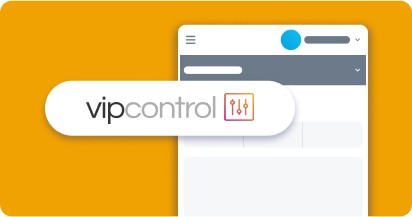
Browse by Popular

Domain Name
- What is a domain name?Eligibility criteria for registering .AU domain namesPremium domain names explained

Web Hosting
View All
Email Hosting
View All
Google Workspace
- Getting Started with Google WorkspaceGoogle Workspace support resourcesTransferring an existing Google Workspace service to VentraIP

Account
- How do I reset my VIPcontrol password?How do I create a VentraIP account?How can I see who accessed my VentraIP account?

Troubleshooting
- How do I clear my browser cache?Troubleshooting a ‘500 internal server' errorTroubleshooting with a ping test
I ordered a Self-Managed VPS without cPanel, how do I get started?
So you’ve ordered your brand new VentraIP Self-Managed VPS with a Operating System installation without cPanel; this article explains what you should do from here to get started. If you’re not familiar with managing a VPS, it is highly recommended that you seek the services of a Linux web server administrator or look at adding the cPanel/WHM addon to your VentraIP service.
Accessing your VPS with SSH
SSH (Secure Shell) is a key part of managing your Virtual Private Server (VPS), it allows you to access it from a secure command line to manage it. To access SSH on your VPS you will need to use an application such as PuTTy (or Terminal if you use a Mac) for your connection. For more information on PuTTy and to download it, please go to their website.
Please note: VentraIP cannot provide support for PuTTy, nor can we be responsible for any issues which arise from its use)
Once you have an SSH application ready to go, please follow these steps:
- Refer to your VPS service activation email to obtain your server IP Address and root password.
- Launch your SSH application (PuTTy, Terminal or other program).
- Within your SSH application initiate a new connection.
- In the hostname or IP address field, please enter your servers IP Address, leave the port set to 22.
- At this point you will now Open or initiate the connection.
- When prompted please enter the username listed in your activation email, enter and then enter your password.
- You should now be connected, this should show a prompt such as:
Last login: never
user@yourservername [~]
You’re now logged into your VPS as the root user with control over ever facet of the server; on some Linux distributions such as Ubuntu and Debian you may be required to su or sudo to root. It’s important that you do not share your root access credentials unnecessarily and that you never login from an insecure machine.
Securing and configuring your VPS
It is critically important that you secure it sufficiently to minimise the potential for it to be hacked; by doing so you are protecting both your data and our network from malicious use. In fact you will find the VentraIP AUP requires you to ensure you have a firewall enabled and configured on your VPS.
Some of the steps you should take to secure and configure your VPS include:
- Install a firewall.
- Lock down non-essential ports using your firewall.
- Set a strong password, also consider disabling password root logins in favour of SSH-key access only.
- If you must enable FTP, ensure you disable root password logins to FTP.
- Configure your webserver (Apache/LiteSpeed/Nginx) and PHP appropriately.
- Update your kernel and all packages within your Operating System.
These are just a few of the steps you should take, but there are many more depending on the operating system you have chosen and the function of your VPS.
Additionally, be sure to ask us via eTicket to set up your rDNS for your new VPS.
Out of your depth?
If you’re unfamiliar with securing and managing a VPS which is designed for serving websites, you may wish to contact the VentraIP Technical Team to have cPanel/WHM added to your service and then make use of our paid Management Day Pass service (available only for CentOS + cPanel/WHM services).
